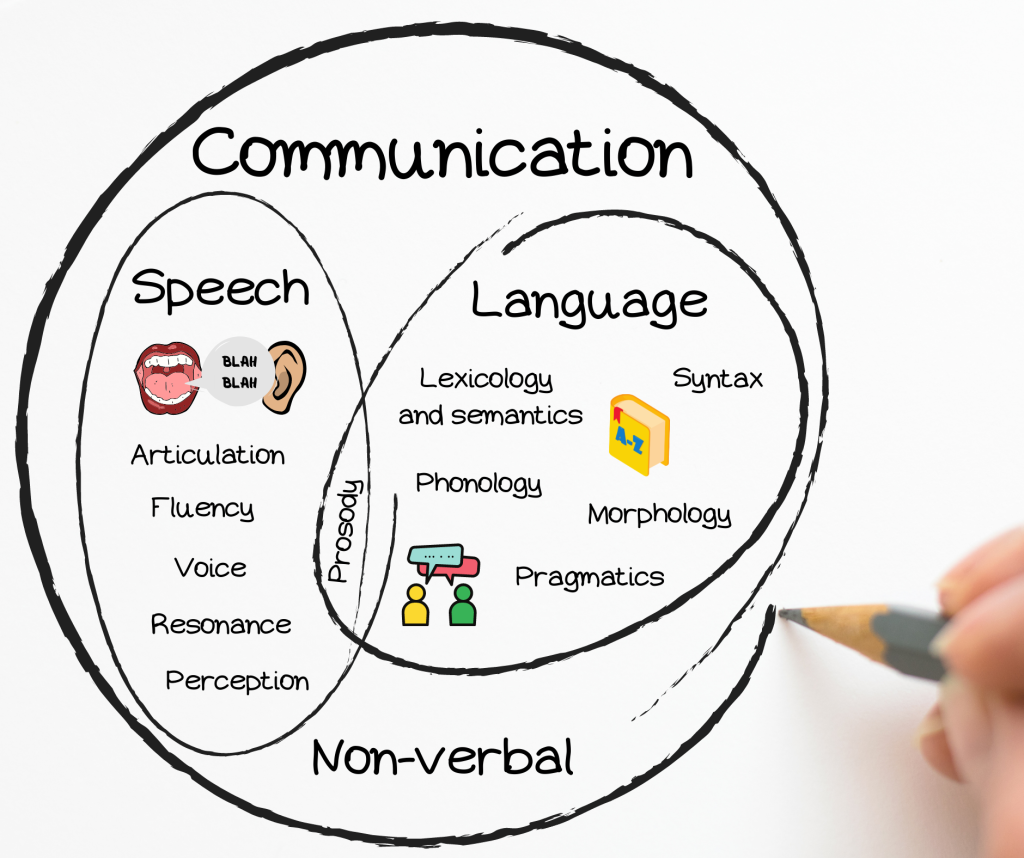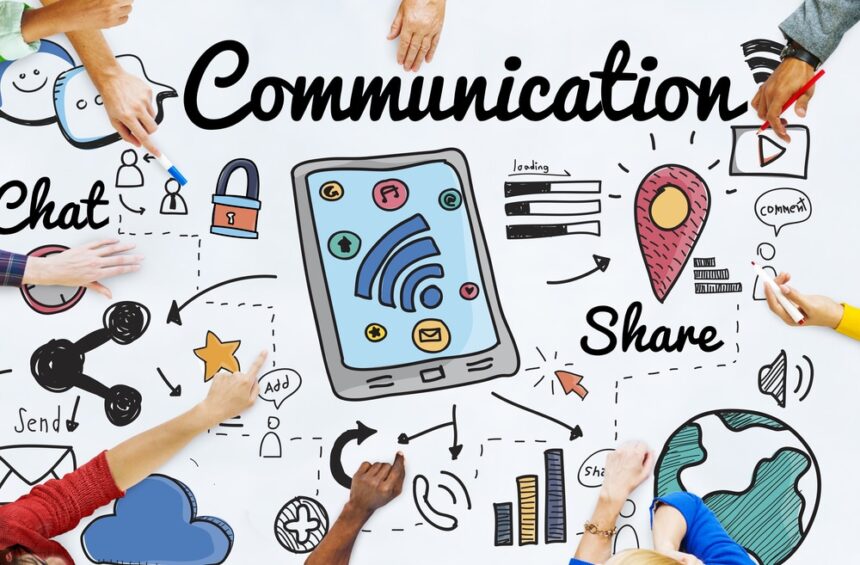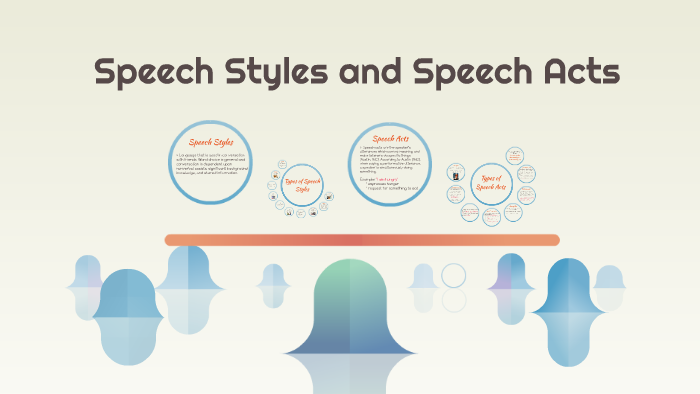How is a Language Used in Communication?
Language is used in communication as a means of conveying messages and ideas between individuals or groups. By using a shared system of words, sounds, and symbols, people can express their thoughts, feelings, and intentions to others, enabling understanding, collaboration, and connection.

Credit: speechneurolab.ca
Types Of Communication
Communication is the foundation of human interaction. It allows us to express ourselves, share ideas, and connect with others. Language plays a vital role in this process, as it is the primary tool we use for communication. Language can be used in two main ways: verbal communication and nonverbal communication.
Verbal Communication
Verbal communication refers to the use of spoken or written words to exchange information, thoughts, and ideas. It is the most common form of communication and is used in various contexts, such as conversations, presentations, interviews, and speeches. Verbal communication involves both the sending and receiving of messages, allowing for interactive and dynamic exchanges.
In verbal communication, the words themselves are crucial, and it is essential to choose them carefully to convey the intended meaning. The tone, pitch, and emphasis given to certain words also play a significant role in how they are interpreted by the listener or reader. Additionally, verbal communication often involves nonverbal cues, such as facial expressions, gestures, and body language, which further contribute to the overall message.
One of the key advantages of verbal communication is its immediacy. It allows for instant feedback and clarification, creating a more engaging and interactive experience. Moreover, verbal communication enables the use of language devices such as humor, sarcasm, and emotion, which add depth and richness to the conversation.
Nonverbal Communication
Nonverbal communication refers to the transmission of messages without the use of words. It encompasses a wide range of signals, including facial expressions, body movements, eye contact, touch, and even the use of space. Nonverbal cues often convey emotions, attitudes, and intentions, providing vital insights into a person’s thoughts and feelings.
Nonverbal communication is a fundamental part of human interaction and can have a significant impact on how a message is perceived and understood. For example, a warm smile can enhance the reception of a compliment, while crossed arms may convey defensiveness or disagreement. Additionally, nonverbal signals are culturally influenced and can vary across different societies.
While nonverbal communication may not involve explicit language, it is a crucial aspect of effective communication. When used in conjunction with verbal communication, nonverbal cues can reinforce or contradict the spoken words, providing additional context and meaning.
In conclusion, language is used in communication through verbal and nonverbal means. Verbal communication relies on spoken or written words to convey messages, while nonverbal communication utilizes gestures, expressions, and other non-linguistic cues. Both forms of communication are essential for effective and meaningful interaction.

Credit: communicationfirst.org
Components Of Language
Language is a crucial tool for communication, allowing individuals to express ideas, thoughts, and emotions. It comprises various components, such as vocabulary, grammar, syntax, and phonetics, which work together to facilitate effective communication between people.
In order to understand how language is used in communication, it is important to delve into its various components. These components include phonetics and phonology, grammar and syntax, as well as semantics and pragmatics. Each of these components plays a crucial role in shaping the way we communicate with one another.
Phonetics And Phonology
Phonetics and phonology are the fundamental components of language that deal with the sounds used in communication. Phonetics focuses on the physical production and perception of sounds, while phonology examines how these sounds function within a particular language system.
When it comes to phonetics, it is essential to understand the articulatory and acoustic aspects of speech sounds. Articulatory phonetics deals with the physical movements of the speech organs when producing sounds, including the position and movement of the tongue, lips, and vocal cords. Acoustic phonetics, on the other hand, studies the physical properties of speech sounds in terms of their pitch, loudness, and duration.
Phonology, on the other hand, investigates the sound patterns within a language. It explores the organization and arrangement of sounds, known as phonemes, and their relationships with each other. These phonemes are categorized based on distinctive features, such as voicing, nasalization, and place of articulation.
Grammar And Syntax
Grammar and syntax are the components of language that deal with the structure and organization of words and sentences. Grammar involves the rules and principles that govern the formation of words and their relationships within a language. It encompasses various aspects, including morphology, which studies the formation and structure of words, and syntax, which focuses on sentence structure and word order.
Morphology examines how words are formed through the combination of prefixes, suffixes, and root words. It also investigates how words can undergo inflection to convey different grammatical meanings, such as tense, number, and gender. Understanding morphology is crucial for language learners as it helps them grasp the internal structure of words and expand their vocabulary.
Syntax, on the other hand, looks at the rules governing sentence structure and word order. It determines how words are organized within a sentence to convey meaning effectively. By following syntactic rules, speakers can construct grammatically correct and coherent sentences. Syntax also encompasses various sentence types, including declarative, interrogative, imperative, and exclamatory sentences.
Semantics And Pragmatics
Semantics and pragmatics refer to the components of language that deal with meaning and how it is conveyed in communication. Semantics focuses on the study of meaning, including the relationship between words, phrases, and sentences. Pragmatics, on the other hand, examines how meaning is interpreted and understood in different contexts.
Semantics investigates the various levels of meaning, including lexical semantics, which examines the meaning of individual words, and propositional semantics, which analyzes the meaning of entire sentences. It also explores semantic relationships between words, such as synonymy, antonymy, hyponymy, and homonymy. By understanding semantics, speakers can communicate more accurately and avoid misunderstandings.
Pragmatics, on the other hand, focuses on how context influences the interpretation and use of language. It considers factors such as the speaker’s intention, the listener’s background knowledge, and the social and cultural context in which communication takes place. Pragmatic aspects of language include conversational implicature, presupposition, speech acts, and politeness strategies. Understanding pragmatics enables effective communication by taking into account contextual cues and adapting language use accordingly.
Language And Culture
Language plays a crucial role in communication, serving as a tool to convey thoughts, ideas, and emotions. It enables individuals to express themselves and connect with others, contributing to the development and preservation of various cultures worldwide.
Language is an integral part of culture as it reflects and shapes the values, beliefs, and behaviors of a community. Through language, people express their identity, traditions, and shared history. This section explores the strong connection between language and culture, emphasizing how language functions as a cultural identifier and influences social interaction.Language As A Cultural Identifier
Language serves as a powerful tool for cultural identification, allowing individuals to express their unique heritage and belongingness. In many societies, language plays a crucial role in preserving cultural traditions and customs. It acts as a distinctive marker, enabling people to identify with a particular group, region, or ethnicity. For example:- Indigenous communities around the world often use their native language as a means to pass down ancestral knowledge, stories, and spiritual practices. This language becomes an essential component of their cultural identity.
- In multilingual societies, people’s choice of language can indicate their affiliation with a specific social or cultural group. For instance, an individual choosing to speak a regional dialect may demonstrate their connection to a particular community.
Language And Social Interaction
Language profoundly influences social interaction by providing a shared means of communication within a community. It enables people to engage in conversations, express their thoughts and emotions, and establish connections with one another. Through language, individuals navigate social relationships and convey social norms and expectations. Here are a few ways language impacts social interaction:- Verbal communication: Language allows people to exchange information and ideas through speech. By using specific words, phrases, and tones, individuals can convey their intentions, attitudes, and emotions, shaping the dynamics of interpersonal relationships.
- Nonverbal communication: Besides verbal expressions, language extends to nonverbal cues like body language, facial expressions, and gestures. These nonverbal elements are influenced by cultural norms and provide additional layers of meaning to spoken language.
- Social norms and etiquette: Language also provides guidelines for social behavior. It encompasses rules for politeness, respectful communication, and appropriate language use in different social contexts. These norms vary across cultures and play a crucial role in maintaining harmony and understanding.
Evolution Of Language And Communication
Language is a crucial tool that allows us to communicate with one another, express our thoughts, and convey information. Throughout history, the evolution of language and communication has played a vital role in shaping human civilization. Let’s explore the fascinating journey of how language has developed and adapted over time.
Historical Development Of Language
The origins of language date back thousands of years to the early days of human existence. As our early ancestors began to form social groups, they needed an efficient way to communicate their needs, share knowledge, and cooperate with one another. This led to the development of primitive forms of communication.
The earliest forms of communication were likely non-verbal, relying on gestures, facial expressions, and body language to convey meaning. Over time, humans started to assign sounds to specific objects, actions, and ideas, giving birth to spoken language. This development enabled greater complexity and nuance in communication, enhancing our ability to express emotions, convey concepts, and share experiences.
As civilizations emerged and interacted, languages diversified and evolved, adapting to different cultural contexts and environments. This linguistic diversity fostered a rich tapestry of communication methods, allowing societies to develop unique identities and preserve their collective knowledge and heritage.
Technological Advancements And Communication
The evolution of technology has been a significant catalyst in shaping the way we communicate. With the advent of writing systems, such as hieroglyphics and alphabets, people gained the ability to record and transmit information across time and space. This breakthrough greatly enhanced the preservation and dissemination of knowledge, enabling advancements in various fields, including science, philosophy, and literature.
Fast forward to the modern era, and we find ourselves in an age of unprecedented technological advancements. The invention of the printing press revolutionized communication by making written materials accessible to a broader audience, fueling the spread of literacy and knowledge on a global scale.
In recent decades, the rise of the internet and digital technologies has transformed how we communicate. The internet has connected people from all corners of the world, breaking down geographical barriers and facilitating real-time communication through email, social media, and instant messaging platforms.
Moreover, advancements in telecommunications have given rise to video conferencing and voice calls, enabling individuals and businesses to connect effortlessly across continents. These technologies have not only improved the convenience and speed of communication but have also fostered global collaborations and cross-cultural exchanges.
In conclusion, the evolution of language and communication has been a dynamic process driven by the needs and aspirations of human societies. From the earliest forms of non-verbal communication to the technological breakthroughs of today, language has continued to adapt and evolve, empowering us to connect, share ideas, and build thriving communities.

Credit: www.helpguide.org
Frequently Asked Questions On How Is A Language Used In Communication?
How Does Language Create Communication?
Language creates communication by providing a system of shared symbols and rules that enable the exchange of information, thoughts, and ideas between individuals. Through words, gestures, and expressions, language allows us to convey meaning and understand one another. It is the foundation of human interaction.
Why Is It Important To Use A Proper Language In Communication?
Using proper language in communication is important because it helps convey messages clearly and effectively. When we speak or write in a proper language, we can avoid misunderstandings and ensure that our ideas are accurately communicated. Proper language also reflects professionalism and respect for the listener or reader, enhancing overall communication quality.
How Language Is Used To Interact?
Language is used to interact through communication. It allows us to express our thoughts, feelings, and ideas, and to understand others. It helps to bridge gaps and build connections between people, facilitating dialogue, negotiation, and cooperation. Language is a powerful tool that enables us to communicate effectively and build relationships.
How Do You Use Language Appropriately In Your Daily Communication?
To use language appropriately in daily communication, follow these guidelines: 1. Keep sentences brief with a maximum of 20 words. 2. Write in an SEO-friendly, unique, and easy-to-understand manner, using active voice. 3. Avoid starting sentences with specific phrases or using passive voice.
4. Ensure your writing passes AI writing detection and maintains a human-like quality. 5. Limit your answer to 50 words.
How Do Languages Facilitate Communication?
Languages are the primary means of communication, allowing individuals to convey thoughts, ideas, and emotions effectively.
Conclusion
Language plays a crucial role in facilitating effective communication. It serves as the medium through which ideas, thoughts, and emotions are conveyed and understood. By understanding how language is used in communication, we can enhance our ability to connect with others.
Through words, gestures, and expressions, we can break barriers and foster stronger relationships. So, let us embrace the power of language and harness it to create meaningful interactions that transcend cultural and linguistic differences. Together, we can build a more inclusive and connected world.





